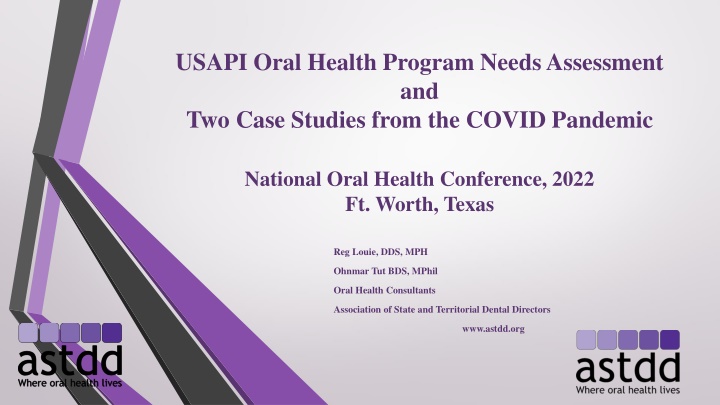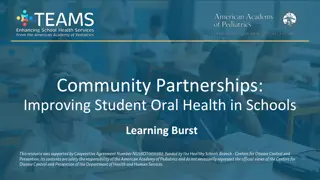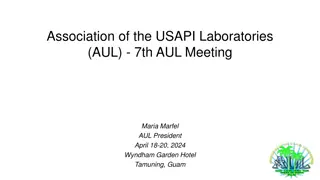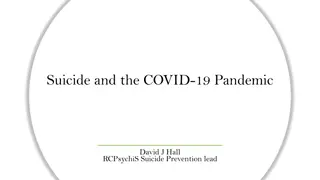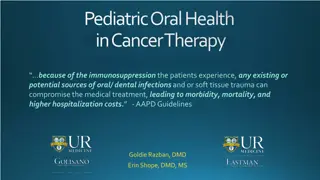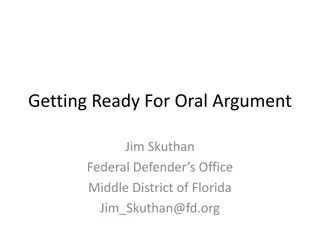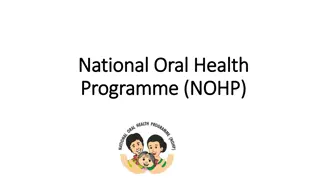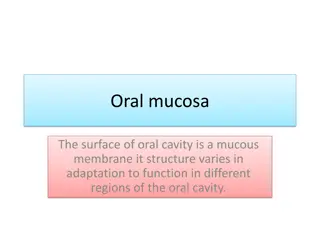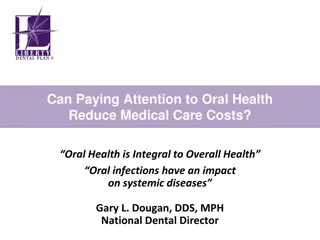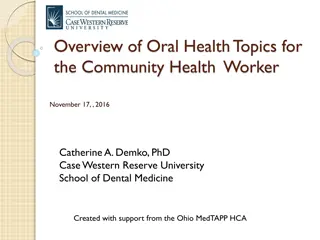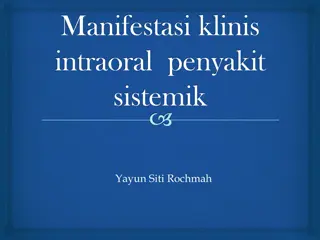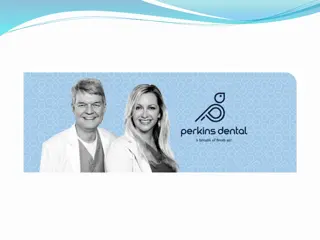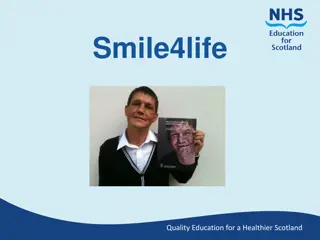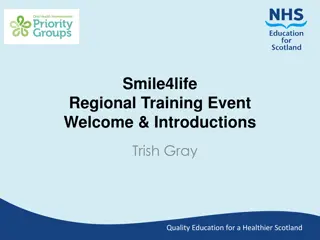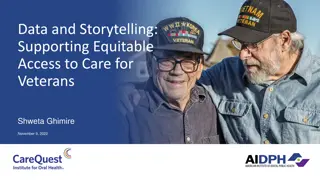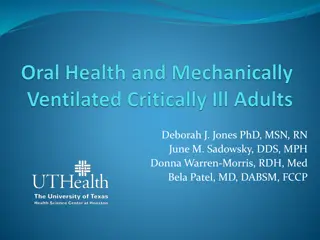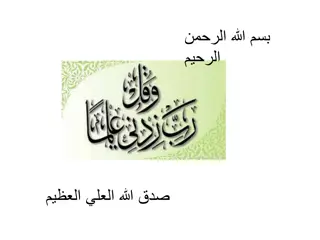USAPI Oral Health Program Needs Assessment & Case Studies from COVID Pandemic
USAPI Oral Health Program Needs Assessment and Two Case Studies from the COVID Pandemic at the National Oral Health Conference in 2022 presented by Reg Louie, DDS, MPH, and Ohnmar Tut, BDS, MPhil. The assessment evaluates the territorial oral health program infrastructure, strengths, gaps, and needs through collaboration with various organizations and key stakeholders. The approach includes reviewing existing reports and literature and using an ethnographic approach to gather information on the oral health environment components.
Download Presentation

Please find below an Image/Link to download the presentation.
The content on the website is provided AS IS for your information and personal use only. It may not be sold, licensed, or shared on other websites without obtaining consent from the author.If you encounter any issues during the download, it is possible that the publisher has removed the file from their server.
You are allowed to download the files provided on this website for personal or commercial use, subject to the condition that they are used lawfully. All files are the property of their respective owners.
The content on the website is provided AS IS for your information and personal use only. It may not be sold, licensed, or shared on other websites without obtaining consent from the author.
E N D
Presentation Transcript
USAPI Oral Health Program Needs Assessment and Two Case Studies from the COVID Pandemic National Oral Health Conference, 2022 Ft. Worth, Texas Reg Louie, DDS, MPH Ohnmar Tut BDS, MPhil Oral Health Consultants Association of State and Territorial Dental Directors www.astdd.org
USAPI Oral Health Program Needs Assessment CDC Division of Oral Health funded ASTDD to assess and report on territorial oral health program infrastructure and capacity, identifying strengths, gaps and needs in 2018 Key collaborations: ASTDD provided management through its ED Chris Wood, coordination and communication through the CDC Cooperative Agreement Manager Beverly Isman Technical expertise through ASTDD consultants; Reg Louie, Ohnmar Tut, Kathy Phipps, and Mike Manz PIHOA, PBDA, PIPCA, ASTHO, HRSA MCHB, NACDD Dental chiefs of all USAPI
Meetings/Workshop: ASTDD and USAPI representatives In late 2018, met with USAPI ministers/directors of public health. Shared proposed project plans/objectives/strategies/potential outcomes. Assured them that findings/recommendations are vetted by them before completion of final report to CDC In 2019, USAPI dental chiefs and representatives of MCH, CHC, PIHOA and PIPCA worked with ASTDD consultants to: present descriptions of their current programs and existing data discuss best approaches and a plan to promote support for and implement the needs assessment decide on an oral health surveillance plan for the USAPI identify a key oral health contact person in each USAPI Subsequently, each USAPI completed a draft of the Characteristics of the Oral Health Environment table
Needs Assessment Approach Reviewed existing reports and literature Used an ethnographic approach structured around the respective territory s perceptions of their needs and cultural influences ASTDD consultants developed assessment tools and table templates for each territory to collect information on strengths, challenges and opportunities for: Components of the oral health environment Service delivery sites and programs Funding Workforce Policy mandates Partnerships
USAPI Findings A. Oral Health Needs Significant oral health problems exist in each territory: high dental caries prevalence, especially among children high prevalence of diabetes, CVD, and obesity In most USAPI, high prevalence of oral cancer associated with betel nut use. Community water fluoridation is not feasible for USAPI Consensus that establishing a common oral health surveillance system be explored e.g., ASTDD Basic Screening Survey
USAPI Findings B. Public Oral Health Care Delivery Sites Delivery sites range from fixed facilities in main hospitals and in CHCs, to extramural/community sites, most using portable dental equipment. Also, outreach/off-site care is provided with other health care disciplines, and capacity for telehealth and distance training/learning is evolving Dental clinics have limited clinical facilities & equipment. Serious challenges due to expense, remote locations from vendors, and equipment maintenance
USAPI Findings C. Funding for Public Oral Health Care Programs and Services All have established PH infrastructure for oral health, funded primarily by general government funds. Each USAPI receives HRSA CHC funding and all have an oral health component. Some have Medicaid (AS, CNMI, Guam) and others have other health insurance/financing programs with dental benefits. Patient fees collected go to the general hospital/clinic funds. To date, USAPI have not been eligible for CDC funding, e.g., infrastructure development, surveillance or preventive services. All OH programs have insufficient funds to meet the needs of their populations.
USAPI Findings D. Current Staffing and Pipeline Established pipeline for training: Department of Oral Health, Fiji National University Some USAPI have a limited ability to hire dentists from other countries US federal dental loan repayment opportunities exist in 3 USAPI Limited number of providers (up to 1:10,000) in some USAPI Minimal Dental CE opportunities/training for all staff on or off-island
USAPI Findings E. Policy Mandates All have US Territory/Commonwealth status that gives opportunities for US federal aid, e.g., MCH block grants that mandate needs assessments. Some have local OH mandates for children, e.g., dental exam prior school entry and dental services to young children. FSM has a state law against selling betel nut and tobacco to children. Problems exist for actualizing policy mandates into public health practice. Some are constrained by policies, e.g., scope of practice and boards of licensure. Limited dental public health leadership/representation, e.g., no FSM national dental director.
USAPI Findings F. Partnerships and Collaborations Collaborations with sister programs , e.g., Head Start & DOE, CHC, Non- communicable Diseases, and MCH. Challenges exist to effective communication and partnering Consensus about benefits of revitalizing the Pacific Basin Dental Association and recreating leadership in oral health for USAPI Partnership with regional health associations and US national dental associations
Development of Report to CDC for USAPI Compiled and summarized information from each USAPI table into an Oral Health Environment report for each island which was vetted by their oral health leaders PIHOA provided an overview of the USAPI general demographics, geography, socioeconomic determinants of health, and health services for each territory A draft final report with project overview, key findings and recommendations was sent to representatives of national organizations and federal agency partners for additional review and comment. Subsequently, the final report was completed and submitted to the DOH/CDC. An Executive Summary is posted on the ASTDD website and shared with ASTHO online newsletter Insular Areas Update usapi-executive-summary.pdf (astdd.org)
USAPI Opportunities and Next Steps [1] CDC and HRSA: seek funding for BSS training and development & maintenance of common OH surveillance system across the USAPI Collect, analyze and use data to identify/target priority populations and to promote a more robust integration of oral health with other health/social programs PBDA, PIHOA and PIPCA can work with ASTDD and other partners to enhance infrastructure and capacity Respond to appropriate NOFOs that support OH programs and their integration with sister public health programs
USAPI Opportunities and Next Steps [2] Promote more substantial/effective NCD collaboration, e.g., promote inclusion/enhancement OH protocols for clinical patients, especially for populations with diabetes, obesity, cardiovascular diseases and engage other partners. Seek assistance from PIHOA and the NACDD Pacific Chronic Disease Council. Build upon the revitalization of the PBDA and explore establishing a Community of Practice. Examine existing policies that might interfere with eligibility to pursue/receive funding or other types of assistance.
ASTDD Consultants and USAPI representatives And Thank You!
